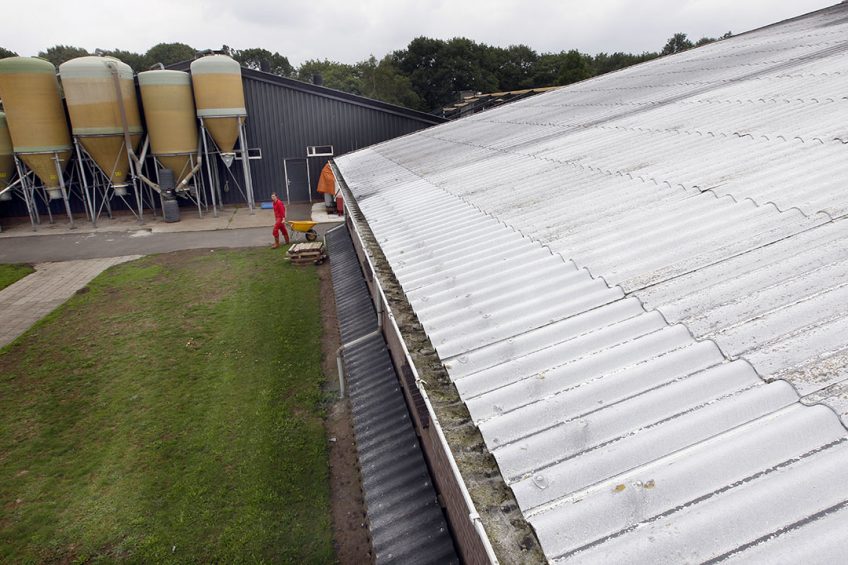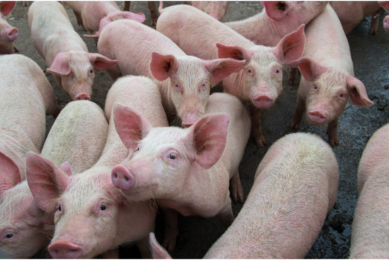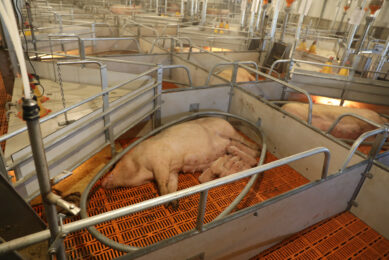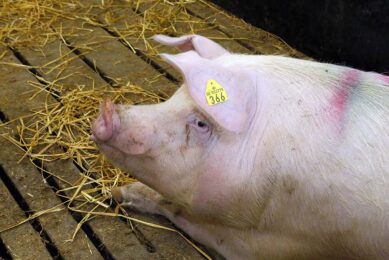Is the pig house too hot in summer? Paint it white!

The summer of 2018 was a hot one and it looks like there are more of them to come. Are there easy ways to insulate pig houses and be better prepared for them? Pig management expert John Gadd has some very handy suggestions.
As I go round talking to pig producers and looking at their housing, there are some areas which need examination:
- Insulation
- Ventilation
- ‘Social compatibility’ i.e. the effect of housing on stress; and of course water. It may not be the ‘forgotten nutrient’ it used to be just 10 short years away, but it still needs attention on many pig farms.
So a few notes on each of these. Let’s start with insulation.
The importance of pig house insulation
We all know about insulation and how important it is. What pig producers know about it the subject is, however skewed. Leaning towards keeping pigs warm/warmer, especially in those temperate to downright cold climates where they have been amply persuaded (and occasionally bludgeoned) into spending more money on not wasting food energy through inadequate insulation. But times are changing. Global warming is here.

What happens when sows suffer from heat stress in a tropical climate? Prof Bruno Silva explains
Keeping pigs cooler in summer is as important now as avoiding inadequate winter temperatures. Pigs being too hot can not only reduce growth and breeding performance but carries with it the probability of ’aberrant behaviour’, an upmarket word for vices:
- tail biting
- aggression
- metal bar and ear chewing
- vulva molestation
- as well as over-drinking diluting nutrient intake and causing imbalance
- heat-stress impairs immunity, a whole new area of research.
Heat also affects conception success.
Long and excessively hot summers
Many parts of the world experienced long and excessively hot summers in 2018. We certainly did in Britain and it shook our pig producers to the core. After the 1st few weeks of it, things were starting to go badly wrong – and fast – in poorer performance and behavioural troubles for those pig farmers who had only modest winter insulation because they thought themselves fortunate to be in the warmer south of the country.
Soon, Pig Progress together with All About Feed will publish a special edition about Heat Stress
Their, what I call, ‘tin roofs’ gave little or no protection against the blistering days of sun. On the contrary, they turned into the equivalent of a radiant grill in their kitchen ovens – and just as hot!
Paint it white!
A very simple partial but in many cases effective remedy was something I brought back from Australia years ago. Last summer I was kept busy recommending painting these thin, inadequately insulated roofs with the following formula; cheaper than white paint and easy and quick to apply, which is important as there is a lot to cover over a roof area. And of course use safety boards, drawing them down as you go; thin roofs are thin!
How to do it? Mix 4.5 litres of PVA white emulsion, 22 litres of water, 20kg of hydrated lime and one handful of cement.
It is important to add the PVA to the water first and the lime afterwards. Keep the mixture stirred when up on the roof. The astonishing fact is that painting-on this white surface can reduce internal solar radiation by 30%. So simple. Surprisingly effective. Just that white paint layer in still air conditions can reduce the internal temperature by 3ºC. from the reflectivity alone.
Technical terms of pig house insulation
From now on with more hot summers to come, you have got to consider keeping heat out in summer, as well as conserving heat in winter, so get to know about thermal conductivity of a material as well as its thermal resistance.
Thermal conductivity or K value, is a measure of a materials ability to conduct heat. Figure 1 shows this better than the usual technical description. Don’t be put off by this. To keep heat out in summer (and retain it in winter) we want to use roof and walling materials which provide the lowest thermal conductivity – nearer to 0.02 to 0.2 conductivity. Straw for instance is nicely in the 0.07 level. Just a tin roof nearer to 70!
Figure 1 – Thermal conductivity of different materials of the same thickness. For best insulation: bad conductivity is good.

Thermal resistance or R value, is the measure of the resistance to heat flow of I square metre of given thickness of a material. See Figure 2. Ranging in typical piggeries from 0.12 to 0.55 m2ºC/W, i.e. highest best. Most of the roofs I visited last summer were way down below 0.16 m2ºC per watt.
Figure 2 – Thermal resistance of a material. Pictured is the same material with different thickness. For best insulation: thickness matters.

Payback leads to money well spent
Again, don’t be frightened by these terms as calling in an environmental engineer will tell you from his measurements:
- What is needed;
- Its cost; and
- Its likely payback.
Payback? My records suggest that the cost of the engineer’s visit pays back at least 30:1 and the resultant cost of putting things right between 6 and 11:1. Money well spent before next summer. It is likely to be another hot one!

Read more expert opinions in our special section











